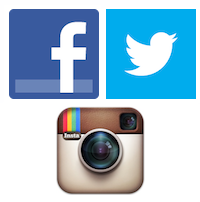 “My photos don’t look right.” That’s what the latest round of the Instagram/Twitter fight boiled down to for users of the micro-blogging site this week.
“My photos don’t look right.” That’s what the latest round of the Instagram/Twitter fight boiled down to for users of the micro-blogging site this week.
For Twitter and Instagram, and for Instagram’s owner, Facebook, however, the fight is more about ongoing efforts by each company to take greater control of its platform and to encourage users to engage in one-stop shopping, Wharton marketing professor Pinar Yildirim says.
On Monday, the photo-sharing program disabled the function that made images display properly in tweets, forcing users to go directly to Instagram to view and comment on photos. The same day, Twitter retaliated by unveiling a version of its mobile app that included Instagram-like filters. That was just the latest in a battle that began brewing after Facebook bought Instagram in April. Shortly after the purchase, Twitter deactivated a feature that allowed users to transfer their friends lists to the photo-sharing site.
“Facebook and Twitter are still apples and oranges to a certain extent,” Yildirim says. “[The] nature and content use of Twitter is different from that of Instagram or Facebook. Instagram and Facebook are a lot more personal, and Twitter has a more professional/news sense to it.”
But neither Facebook nor Twitter is necessarily content to remain in its niche, particularly not when valuable user data and advertising returns are at stake. Twitter, in particular, has recently made a number of moves to take greater control of its platform, including making changes to its developer ecosystem and limiting the access that third-party applications have to information like users’ friends lists. “The moves by Twitter are certainly a strategic approach to strengthen its advertising power, but it is also about taking control of the data market,” Yildirim notes. “Given the ad revenue that Twitter generates, it only makes sense that the company is making the effort to control the information contained in tweets.”
The micro-blogging site has become an important customer service and market research tool for a number of firms, she adds, but with that comes a greater burden for Twitter to make sure the site isn’t targeted by spam or hackers, and that third-party firms are using consumer data properly. “Twitter has been a relatively effortless member of the social media arena; they kept things simple,” Yildirim says. “But simplicity can be a missed opportunity. Why give Facebook or others the privilege of their own information space? People can share a lot of information with a single photo, and they want to do that.”
The opportunity to collect such data was a key reason that Instagram was worth $1 billion to Facebook, she points out. “If you are Facebook, you want one thing from people: You want them to share data. The more they share, the more active they and their networks become, and the more attractive Facebook stock will look in the short run.”
That’s why, even though Facebook has also introduced the increasingly ubiquitous set of photo filters, Yildirim expects that Instagram will remain a separate entity for the foreseeable future. “Did Instagram make it more fun for people to share photos with friends? Yes. Did it make users more likely to share instant photos? I believe it did,” Yildirim says. “And sharing implies having more to give back to stockholders and advertisers.” Instagram, she adds, “was a long-term investment for Facebook in the data collection and controlling game. Owning people’s photo archives is a great source of personal information.”



